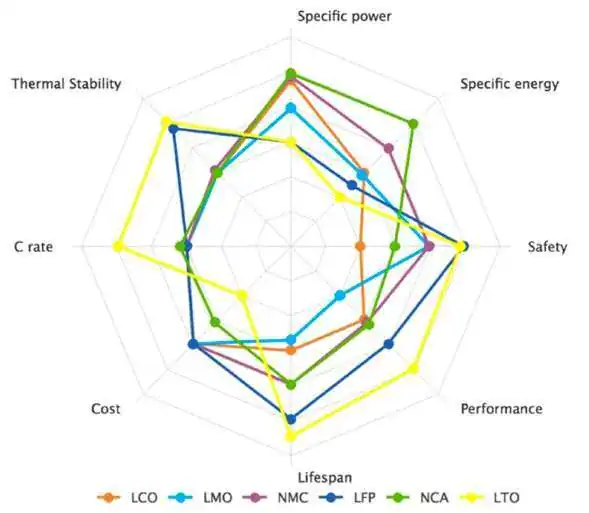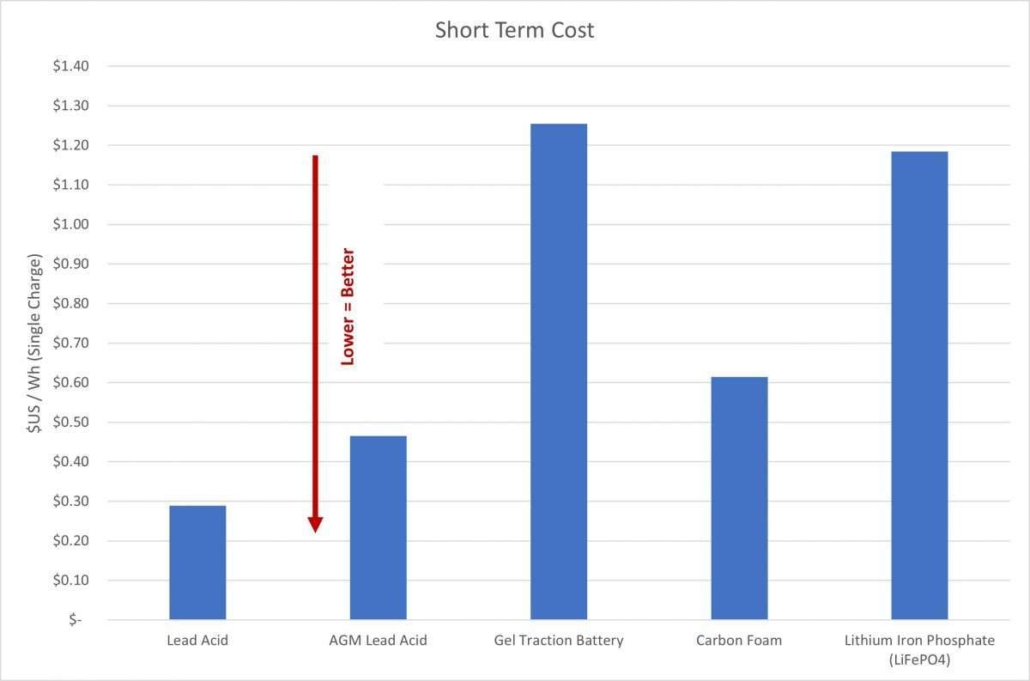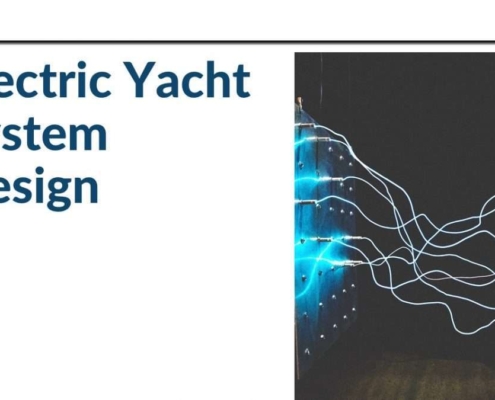When selecting batteries, we start by considering the chemistry. Which type of battery do you want? This depends on several factors:
- Battery capacity
- Depth of discharge / useable capacity
- Weight
- Volume / space for storage
- Lifetime charge cycles
- Cost
When comparing battery types, we often see charts like Figure 3‑1. But did you notice the little asterix that said “Based on Bare Cell”? These numbers come from a test battery; something only ever used in a lab. It doesn’t consider the weight of the casing, spacing of multiple cells, any included electronics to protect the battery. And it ignores cost. Is this actually realistic?
I prefer to compare real-world batteries in their final state. (Figure 2‑2) This offers a skewed perspective, because I only compare individual manufacturers, with no guarantee that I picked the best manufacturer in each category. But it provides an excellent overview to decide which battery chemistry warrants further scrutiny.
Figure 2‑2 shows the same comparison of weight and volume, but based on real world batteries. We see that they largely segregate into three categories. Lead acid and AGM batteries form the entry level. Nothing impressive from a weight and volume perspective. Lithium iron phosphate (LiFePO4) stands out as the clear winner, both weighing less and requiring less volume. Then carbon foam stands in its own category. This doesn’t win any prizes for weight, with similar specific energy to lead acid. But it leads the pack in terms of volumetric density. Carbon foam packs the energy into a small space, requiring even less volume than LiFePO4. Not a good choice for racing boats that need to minimize weight. But if you have a cruising boat and just need to fit lots of battery into a small space, carbon foam offers a good option. Which battery works you? Your lifestyle determines the best battery chemistry.
By lifestyle, I actually mean your wallet. It’s no secret that cost factors largely into purchase decisions. Better performance requires higher cost. So how much do we pay for those fancy lightweight batteries? Figure 2‑3 compares cost against specific weight. This combines the energy supplied, weight of the battery, and cost for purchase into one comparison. In this comparison, lithium batteries only cost about 20% more than AGM batteries. Sure, you pay more for lithium, but you get more as well. Looking at the graph, we also see that carbon foam batteries don’t win on a weight basis. The previous graph confirmed this: carbon foam batteries stand out for more energy in a smaller package. But there’s more to a battery than weight. We also care about the cost of the power they deliver.
With large investments like batteries, we especially need to ensure we get good value for our money. We want batteries that are good at storing electricity, for a reasonable price. I compared purchase price against energy storage in the batteries. Now things get interesting; value sways heavily based on two major factors:
- Depth of discharge: To maintain battery life, you shouldn’t discharge a battery completely before recharging. This sets the useable capacity of your battery.
- Total lifetime cycles: how many times can you recharge the battery before it stops working.
The answer shows a strong relationship between these two factors, leading to many complicated graphs and tables. I kept things simple by selecting the best values in each category, creating a best case comparison. But best value depends on how you use the battery.
Figure 2‑4 shows two cost comparisons. The Short Term Cost compares purchase price against the useable energy from a single charge of the battery. The Long Term Cost compares against the total energy stored in the battery across the lifetime of all recharge cycles. In the long term, LiFePO4 batteries trounce lead acid. Lithium extracts a heavy price, but it may be the last battery you ever buy. Carbon foam batteries fall in very close to lithium. Less performance, but less cost as well. Here’s the catch. These high costs only make sense if you plan to use the full life of the battery.
Even with daily use, a lithium battery lasts around 16 years. Do you plan to use your boat for that long? The average weekend sailor barely uses their battery. They fall more into the short term comparison. In the short term, lead acid devastates lithium and carbon foam. Simple and cheap is the way to go for short term usage. Sure, it doesn’t win any performance competitions. But you never needed performance.
Performance or bargain basement? The best value for battery chemistry depends on your lifetime. How do you plan to use the batteries and how long will you own them?















